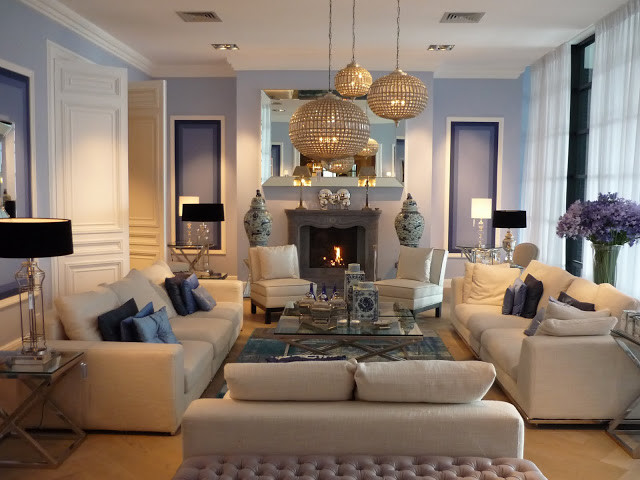Furniture, the tranquil legend of our living spaces, has for quite a while been something past a utilitarian need; it is an assertion of culture, craftsmanship, and human genius. From the unpleasant ease of old designs to the smooth lines of contemporary pieces, furniture has progressed nearby human advancement, reflecting our developing Liang & Eimil necessities, feel, and values.
Out of date Beginning stages:
The verifiable scenery of furniture is essentially basically as old as human improvement itself. Archeological unearthings reveal basic sorts of furniture following as far as possible back to obsolete Mesopotamia, Egypt, and China. In these early civilizations, furniture filled mainly down to earth needs, similar to limit, seating, and resting. Direct stools, chests, and beds were made from available materials like wood, stone, and metal, showing the virtuoso and ability of outdated talented specialists.
Old style Effect:
The dated civic establishments of Greece and Rome raised furniture to a masterpiece, blending handiness in with perfect craftsmanship and sumptuous enhancement. Greek goods, depicted by clean lines and numerical shapes, overflowed a made light of style, while Roman furniture featured elaborate carvings, trim work, and extravagant materials like marble and ivory. These customary plans laid the groundwork for future furniture styles, influencing innovative improvements into the endless future.
Old Power:
During the Bygone eras, furniture design went through a change influenced by the socio-social scene of Europe. With the rising of feudalism and the spread of Christianity, furniture became pictures of wealth, status, and severe commitment. Gothic goods, with its versatile carvings, pointed bends, and severe topics, finished places of supplication, royal residences, and decent homes, reflecting the significant and different evened out potential gains of old fashioned culture.
Renaissance Reclamation:
The Renaissance meant a resurgence of interest in conventional craftsmanship and culture, provoking a rebuilding of outdated furniture structures and improving topics. Renaissance furniture, depicted by equilibrium, degree, and congruity, blended old style clean with headway and experimentation. Italian Renaissance trained professionals, similar to Leonardo da Vinci and Michelangelo, led new techniques in carpentry, veneering, and marquetry, making gems that transcended straightforward convenience and became magnum opuses.
Extravagant Elegance:
The Luxurious time, with its complement on grandiosity, extravagance, and conspicuousness, saw furniture advance into mind boggling and elaborate signs. Colorful decorations, portrayed by proportional curves, awesome ornamentation, and rich materials like giltwood and velvet, upgraded the palaces and salons of Europe’s upper class. Convincing Lavish originators, for instance, André-Charles Boulle and Thomas Chippendale raised furniture-creation higher than any time in recent memory of craftsmanship and excess, leaving a getting through legacy on the universe of plan.
Enlightened Straightforwardness:
The Hour of Enlightenment brought a shift towards authenticity, straightforwardness, and helpfulness in furniture plan. Affected by philosophical turns of events, for instance, perception and humanism, Light time furniture pushed clean lines, numerical designs, and sensibility. Fashioners like Thomas Sheraton and George Hepplewhite upheld neoclassical styles, depicted by equity, clean, and restriction, reflecting the objective norms of the Illumination.
Present day Revolt and Advancement:
The Cutting edge Change of the nineteenth century changed furniture creation, presenting a period of enormous scope assembling, robotization, and standardization. Energized by mechanical turns of events and social change, pioneer draftsmen like Le Corbusier, Marcel Breuer, and Charles and Bar Eames embraced new materials like steel, glass, and plastic, parting away from standard ornamentation and embracing moderate style and functionalism.
Contemporary Examples:
In the 20th and 21st many years, furniture design has continued to create, embracing an alternate extent of styles, materials, and effects. From the regular kinds of Workmanship Nouveau to the high level longs for postmodernism, contemporary furniture reflects the larger part and dynamism of the state of the art world. Legitimate arrangement practices, high level production headways, and the mix of workmanship and development are shaping the destiny of furniture, as designers attempt to make imaginative, biologically aware, and socially relevant pieces for the 21st century home.
All things considered, furniture isn’t just a get-together of wood, metal, or surface; it is a showing of human creative mind, culture, and craftsmanship. From the old developments of Mesopotamia to the electronic age of the 21st 100 years, furniture has been a consistent companion, shaping our living spaces and working on our lives with heavenliness, comfort, and helpfulness. As we continue to investigate the reliably changing scene of design, let us remember the godlike style and traversing custom of furniture, a veritable embodiment of the human spirit.